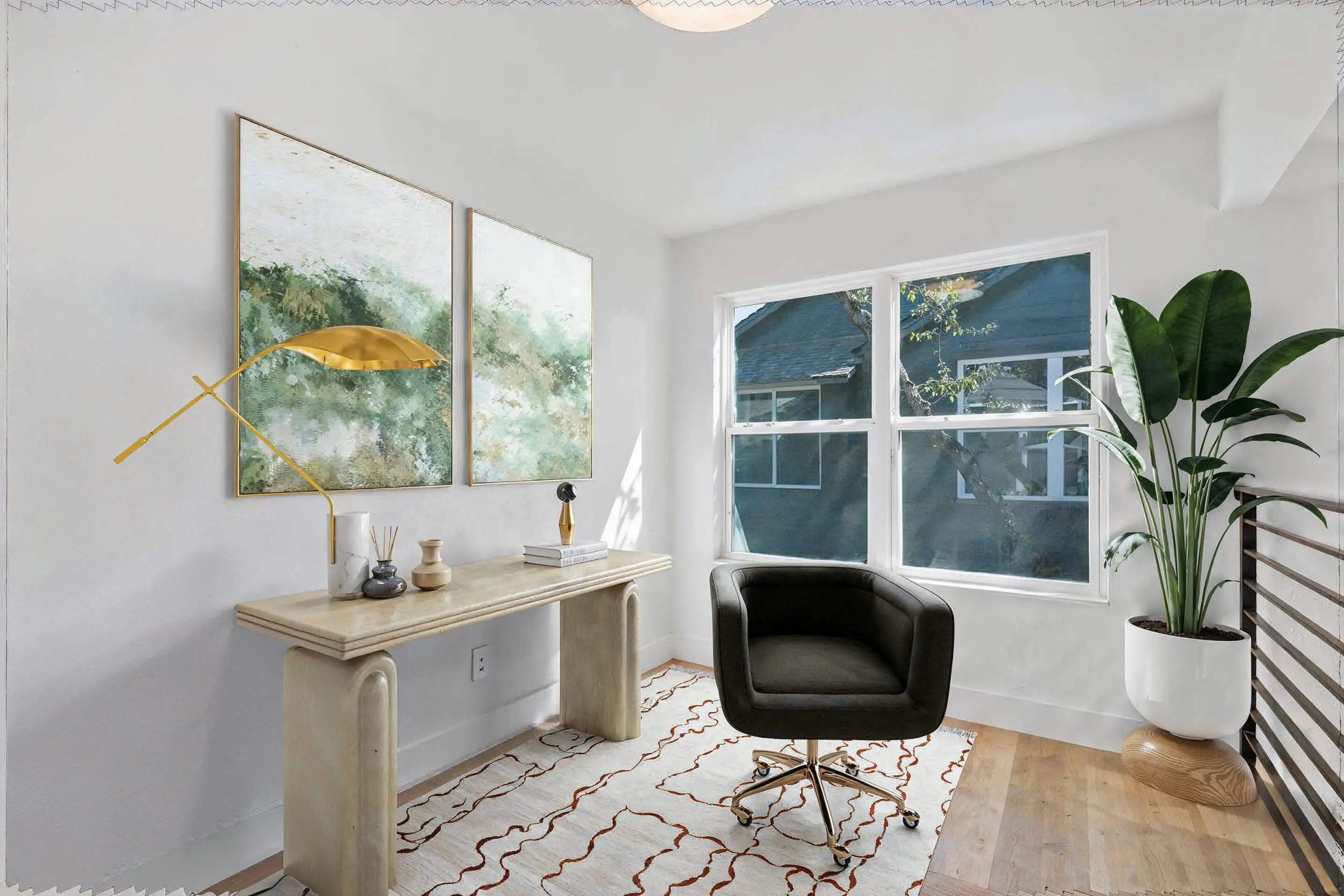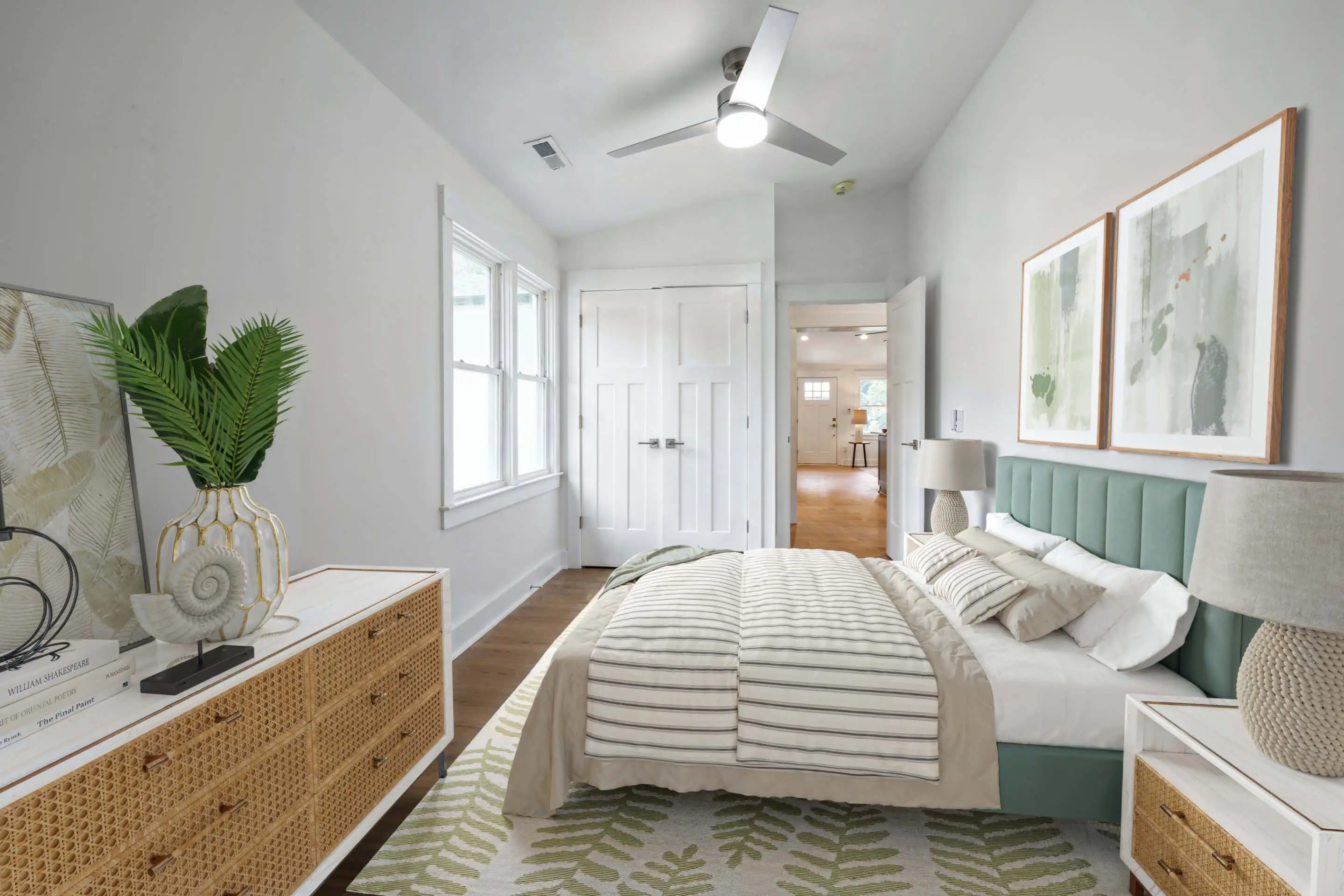
The virtual home staging process is often used by real estate agents. The purpose is to attract prospective home buyers to their vacant properties. However, in recent years, virtual staging has also become an important tool for forward-thinking hoteliers and business managers.
But what exactly is virtual staging? The process involves using photo-editing software to provide a simulated, realistic 3D render for hotel rooms, lobbies and shared spaces. The high quality, virtual staging software can replace existing furniture and decor, or work with a photograph of an empty room to create an appealing virtual environment for use in digital marketing materials.
Virtual staging helps prospective hotel guests and potential buyers visualize themselves in the space, while allowing hoteliers and developers to align with current market trends. The process itself is sustainable, can be actioned remotely and it’s cost effective and scalable too.
In this article, we’ll explore how to do virtual staging effectively, and discuss the merits of a virtual staging service for hoteliers and developers.
A key focus of real estate marketing is traditional staging. This method often involves moving furniture, removing clutter and adding accessories to a living room, bedroom or other interior spaces of a vacant property listed. However, this method isn’t always feasible for hoteliers with multiple properties and room styles across different locations.
That’s where virtual staging software comes in - it takes a different approach. Hoteliers and business managers can decide the look and feel of a specific space remotely. This also helps to reduce the carbon footprint due to the elimination of transport costs.
The photo-realistic software is ideal for hotel owners planning a renovation, building an off-plan property or it can be used to improve an existing space by experimenting with different color palettes and furnishings, all without the expense and hassle of physical staging.
In recent years, the hospitality industry has experienced a monumental shift, and with such a shift, an updated portfolio of key market trends has emerged. Hoteliers and property managers have been encouraged to be more adaptable and eco-friendly in their offerings.
This bodes well, as a recent Accor survey showed that 70% of travelers are now seeking out hotels that value sustainability and greener choices. Virtual staging also ties into this seamlessly. It can cost less than traditional staging and causes less disruption to a business, making it a practical choice for hospitality brands.
The use of AI technology can also help to optimize real estate digital marketing campaigns. With clever use of photo-realistic images or re-designs, the customer experience begins long before physically embarking on the journey. By utilizing high resolution staging renders of guest rooms, lobbies and restaurants, a thoroughly immersive experience is curated online, allowing guests or owners to imagine that they are already in the hotel or residence.
Virtual staging offered by renowned companies can help to transform empty hotel rooms and residences into dream destinations within days.
They offer fast turnaround times and high resolution, realistic photo renderings to ensure that rooms always captivate the target audience. They also offer AI object removal from existing photographs of the space.
Three easy steps to begin a virtual staging process include:
The companies can work to your specifications - changing color schemes, furniture shapes and styles, lighting and accessories to bring your vision to life. Here are a few practical tips to ensure your project goes smoothly.
The virtual staging cost will ultimately depend on your requirements and the number of photo-realistic images chosen. Usually, prices range from a few hundred dollars for a standard hotel room, to a few thousand for a full virtual renovation on a lobby. It’s a worthwhile investment that can be recouped back easily through increased sales and bookings.
The key to success is knowing how to do virtual staging properly, and that means using the right software or virtual staging services. High resolution visuals help a hotel to stand out from its competitors by placing the customer at the center of the experience, even before they arrive at the property.
The photo-editing software gives an ultra-realistic impression of furnished rooms and shared spaces, which in turn reassures customers, leading to increased bookings and guest satisfaction as they know exactly what to expect.
In fact, according to the National Association of Realtors in a 2020 study, over 82% of staged properties sell for the exact asking price or even higher.
In summary, virtual staging is beneficial for its flexibility, sustainability and cost effectiveness. Any work can be actioned remotely, and it aligns with the key market trends of utilizing AR and VR to enhance the look and feel of a space.
For hotels undergoing a rebrand, renovation, or for developers constructing a new build, virtual staging can become a core part of an overall marketing strategy. The action doesn’t only serve to increase hotel bookings and sales, but it also portrays the hoteliers and development managers as adaptable, mindful leaders of the hospitality industry that always strives to put their customers and their experience first.




